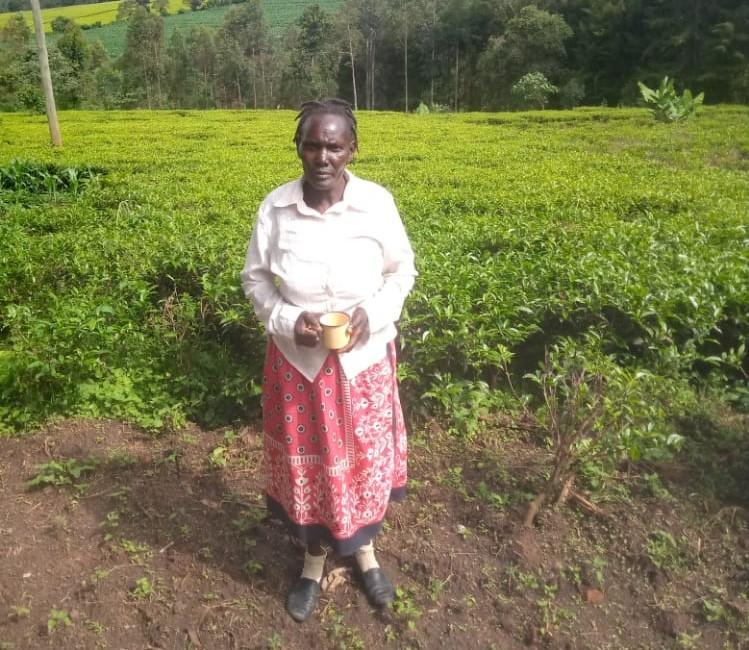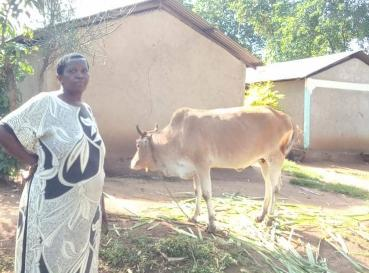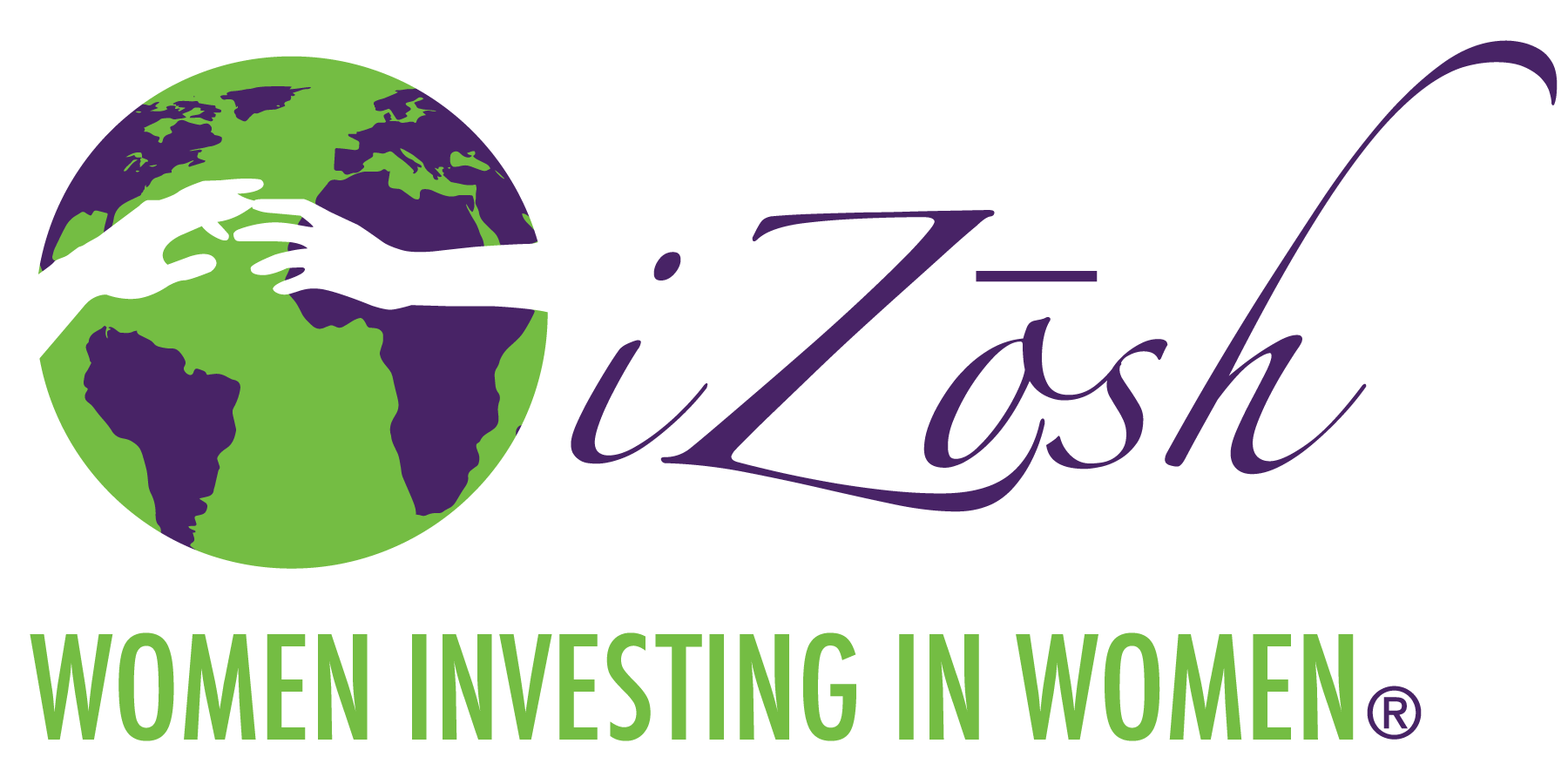By Johanna Ryan, iZōsh International Visionary Board Member

Johanna Ryan, Global Director of Impact for VisionFund International, is one of the Visionary Board Members of iZōsh International. Johanna brings so much to the table! From her experience advancing microloans globally at VisionFund International, an organization whose mission is empowering families to create income and jobs, to her deeply rooted passion to empower women who are living in extreme poverty. iZōsh International benefits greatly from Johanna’s expertise and passion. In this blog, Johanna shares her personal analysis of what can result from the simple act of funding a microloan for a woman farmer through iZōsh Chapter Events.
Last night I took in a delivery of groceries from one of the major UK supermarkets, and amongst all the vegetables, cheese, meat, fish, and biscuits, the item that caught my eye was the bag of carrots. Seven hundred grams, about a pound and a half, of orange root vegetable, clean and stripped of its greenery – a marvel of mechanisation. Maybe as recently as a week ago, that carrot was in the ground 90 miles away from where I type, in a 30-acre field of carrots, covered in plastic and topped with straw as protection from Scotland’s frost and snow. Then at some point the supermarket ordered three tonnes of carrots and the machines went to work to get the carrots out of the ground: straw chucker, “poly”-winder, greenery-remover, and carrot-lifter/soil-remover. And that’s just the activity on the farm, and only at the end of the growing cycle. Off the farm, the process continues with other machines washing and bagging the carrots before refrigerated lorries and trailers move the produce through the distribution system, finally to land in my kitchen. This is what efficient commercial farming looks like, tonnes and tonnes of a single commodity that I buy for about 30 cents a pound, with the farmer, I trust, making a profit (although the “real” cost of food is a separate matter).
The key to this profitability is, of course, the mechanisation. While I spent some of my childhood on a small farm with vegetables, pigs, and poultry, with maybe a rotavator as the sole piece of farm machinery, most of my experience of farms has been with small holdings where mechanisation is completely unknown. I can picture in vivid colour the hillside plots in southern Ethiopia with women bent over preparing the soil with hand tools. The same scene is replicated innumerable times the world over.
So how does a farmer with, say, two acres of land and a collection of hand-held tools progress to hundreds of acres and an array of big machinery? Chances are that she or he never will personally make that transition, though the community may as small-holder after small-holder sells up when a more secure and lucrative opportunity arises. That means employment, probably in a city, and probably in some kind of factory. For simplicity’s sake, I can gloss over these macro drivers of agricultural development in one paragraph, referring you to countless histories and analyses of the industrial revolution and, more recently, the growth of manufacturing in lesser-developed countries. In Indonesia, for example, per capita annual income increased from $54 to $3,800 between 1967 and 2017, enabling factory workers to eat well, educate their children, and buy electric cookers, televisions, scooters, and all manner of items that the subsistence farmer is unlikely ever to acquire.
But one step at a time: how are small-holder farmers best supported to increase their incomes on the farms that they have now? Let’s just confirm that increased income is the ultimate aim: more money is not the end in itself, but it is the means by which people living in poverty are able to access regular healthcare, education and training, better food and housing, and build a safety net to prevent them falling back into poverty in difficult times.

iZōsh Chapter Events provide support that goes to the heart of small-holder farmers’ needs – credit to invest in high-quality seeds, fertiliser, and pest/weed control to achieve maximum yields from the land. Or the investment may be in improved equipment, allowing the farmer to graduate from hand-held tools to a walking plough and a couple of oxen (which can be rented to neighbours); or perhaps a wheelbarrow to move the produce off the field to a secure shed. For the farmers supported by iZōsh microloans, even small changes can bring enormous improvements to the farmer’s efficiency and, ultimately, the income earned from the land.
However, change can be very difficult, not least of all because of social pressures. iZōsh Chapter Events deliberately seek to support women in their enterprises. In the communities iZōsh microloans support, whatever the primary business focus of women, farming also features as a cheap source of the family’s food and as supplementary income from the sale of the produce.
Women, however, face challenges that the men do not have in the same way or to the same degree. It is not unusual for land ownership to be restricted by custom and even by law (though that is increasingly rare), which means that women may have no authority over or input into the decisions about managing the land. Regardless of ownership, women work the fields but often do not have the same access to training about application of seeds, fertiliser, etc., simply because they are women and not perceived to be the decision-makers; and perhaps they care for young children and elderly relatives who cannot be left alone. Also in the communities where iZōsh International focuses its work, women are less likely to own a phone than men (e.g. 13% gender gap in sub-Saharan Africa) and far less likely to have access to mobile internet (e.g. 37% gender gap in sub-Saharan Africa).

Despite the challenges, I am always keen to emphasise the improvements that women, and farmers generally, have experienced in recent times.
- Between 1981 and 2016, 40% of the world became greener, which includes improved agricultural productivity.
- Approximately half the population of sub-Saharan Africa now has access to electricity, compared to only a quarter in the year 2000. Amongst the countless benefits from a reliable power source is the ability to store produce in a controlled environment. It also means that mobile phones can be charged, facilitating all manner of practical solutions and social interactions.
- Literacy rates are steadily improving: 61% for women in sub-Saharan Africa, up from 47% in 2000. Better educated women make better decisions for their children and families, and about how they manage their money and their small businesses.
- Again using sub-Saharan Africa as an example, 33% of the population now has a mobile money account, up from 12% in 2011, which is a larger proportion than any other region of the world. With mobile money, finances are more efficiently managed, and this includes saving money in secret, a true boon for anyone – especially women who have limited control of the household finances. Indeed, a mobile money account presents all sorts of opportunities to those traditionally excluded from the formal financial system, not the least of which is easy access to credit for investment, as made possible by iZōsh Chapter Events.
These improvements, along with so much other positive progress, do not, of course, reach all deprived areas of the world – “For you will always have the poor with you” – and natural disasters of all kinds have and will continue to affect the poor most of all. Yet we must recognise that advances and improvements are happening all around the globe, and, as illustrated above, sometimes at a rapid pace.
The generation of farmers born into poverty at the start of this millennium may not achieve the mechanisation that the carrot farmer in Scotland has, but she may be able to watch training videos on her phone for the best application of fertiliser; to hire a tractor from an app on her phone; and to store her carrots in a refrigerated shed to sell when demand and prices are highest. All this adds up to increased income, and all of this can be facilitated by credit from a microfinance institution supported by iZōsh Chapter Events.
The future for women farmers is full of wonderful possibilities.
